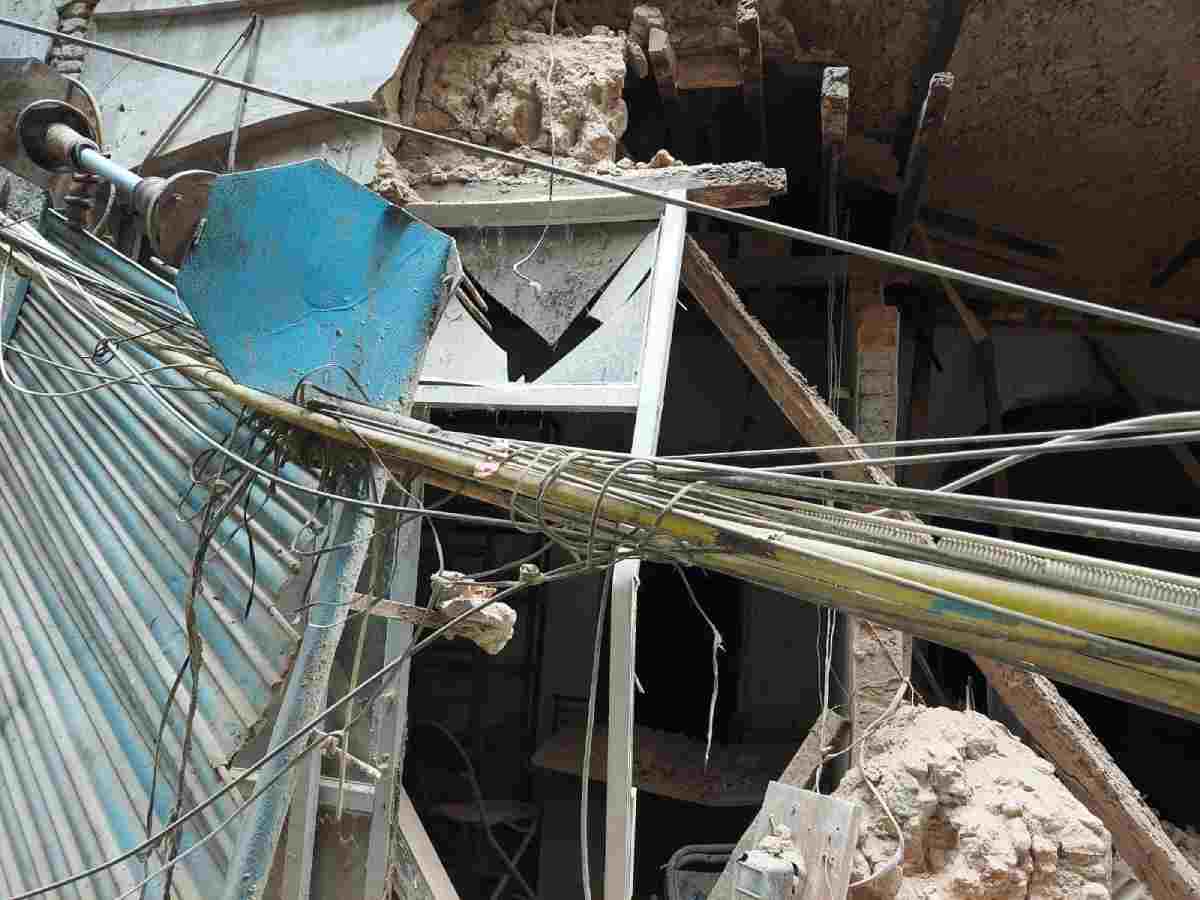
CRUMBLING: A building collapsed in the Charkhewalan locality of the walled city on June 25
The Municipal Corporation of Delhi (MCD), during its survey of 23,07,405 buildings out of 28,84,164, flagged only four buildings as dangerous.
But after heavy rain in the national capital last week, multiple instances of building collapse were witnessed.
As many as six were recorded in the old Delhi area alone.
That apart, a terrace collapsed in Harsh Vihar, while a wall of another building collapsed in Vasant Vihar, killing three construction workers. Another major collapse was witnessed when a shed at the Indira Gandhi International Airport broke and landed on top of a taxi at Terminal 1. The incident resulted in the death of the driver.
Similar incidents of building collapse with the onset of monsoon were seen across the National Capital Region (NCR).
Police officials said that apart from the three Vasant Vihar workers, 11 others were killed in the rains in the national capital, including the one due to the collapse of the airport shed.
According to an MCD official, who spoke on condition of anonymity, most of these incidents happened because the civic body lacked an action plan.
“Most of these buildings were made illegally without proper paperwork. Sometimes the architectural drawing in itself would not match with the final structure. There are multiple ways in which the MCD has been lackadaisical about the construction of these structures,” he said.
Pushkar Pawar, a senior urban planner with the civic body, pointed out that the reasons for the house collapse, especially during the monsoon season, were multiple.
He said that it was mostly use of poor construction materials and extreme temperatures.
Also Read: Delhi Rains: Mother gives birth to one, mourns death of other
“Most of the newly-constructed buildings have used construction materials which are not the best. Most of it is sub-par and cannot really withstand the extremes in temperature that we have here in Delhi. For example, for the longest time during the summer season, the temperatures remained at a constant high. However, right after, it started raining suddenly, with the much colder water falling on to the buildings. Thus, these buildings are made in such a way that during summer they expand and in winter they contract to help maintain the tensile strength of the constructions. However, the suddenness of monsoons, eventually lead to the foundations not being able to sustain the load anymore,” he said.
He added that normally such buildings do not collapse, but the violation of several rules eventually leads to the collapse of the structures.
“These buildings flout multiple rules during construction. For one, there is the fact of them not using quality material. Moreover, there is a rule of all buildings leaving some amount of space between two houses but there is no space between any of them,” he explained.
“Apart from that, people sometimes submit a plan for a three-storeyed house but end up making a five-storeyed house. It is illegal but MCD prefers to look the other way. However, what the person making the building forgets while making such a building is the fact that the foundation has been made while keeping the three-storeyed house in consideration. It cannot withstand the load put on it by a five or even four-storeyed house,” he said.
He emphasised that many buildings in the old city of Delhi are crumbling due to lack of renovation.
Also read: Flood Preparedness: MCD fails to meet deadline, DDMA ready to tackle the crisis
“Most buildings there are extremely old, while some have already been given heritage status. Some of these range from 150 to 200 years old as well. However, it may be noted that none of them have ever been renovated. Any building that passes a certain juncture of age requires renovation, without which it is only apparent that the building will fall,” he said.
As toxic smog engulfs the capital and AQI hits 498, the Delhi High Court has…
Low visibility due to dense fog led to flight cancellations, diversions and delays at Delhi…
The World Cup winner was scheduled to reach the capital this morning for his final…
The actor says the psychological thriller focuses on emotion, character and storytelling, not shock value,…
Court takes note of poor implementation of anti-pollution measures as Delhi’s AQI remains in ‘severe’…
Multi-layered security and traffic restrictions put in place around Arun Jaitley Stadium as Argentine football…